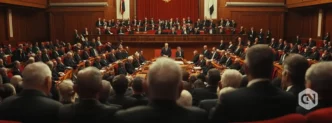The middle days of July have come with a lot of highlights for the relationship between India and the UAE. As a brief background, the Prime Minister of India was on a trip to the UAE, where he met the Crown Prince of Abu Dhabi – Zayed Al Nahyan. The purpose of the trip was simple: boost economic ties with the region and foster development for both parties. What has been achieved by the Reserve Bank of India and the Central Bank of the UAE completely aligns with this aim.
Per a press release published by the RBI, both the Central Banks have signed and exchanged two crucial MoUs – Memorandum of Understandings. One pertains to establishing a framework that will enable us to execute seamless cross-border transactions. Another is about linking payment and messaging systems.
Simply put, India and the UAE are looking to trade in their local currencies and allow their residents to transact without worrying about currency conversion to the USD.
If successful, then importers and exports of both regions will benefit largely from this development. How? They, till now, had to raise invoices in a different currency. Effective the implementation of this MoU, the invoices can be raised in local currencies to settle the transaction. As for the residents, they will be able to send remittances to their loved ones in local currencies.
Advertisement
Indian Prime Minister Narendra Modi was present with Zayed Al Nahyan at the moment when MoUs were being exchanged by the Governors of the respective Central Banks. This brings Shaktikanta Das for the RBI and H.E. Khaled Mohamed Balama for the UAE’s Central Bank.
Making things simpler is the fact that India’s UPI and the UAE’s IPP could also soon be connected. This will boost transaction volumes not just among businesses but also among residents. As a matter of fact, linking respective Fast Payment Systems is largely expected to benefit residents who will now be able to send money to their family members or friends, or relatives.
This falls under the MoU – Payments & Messaging Systems. It further covers linking Card Switches and exploring establishing a connection between payments messaging systems.
Now, linking UPI and card switches sounds similar, but it is a bit different. UPI linkage comes with the benefit of accelerating fast and convenient payment methods securely. Card Switches, on the other hand, refer to accepting their domestic cards for transactions. If implemented, it will only go on to pave the way for bilateral transactions at all levels.
Advertisement
Narendra Modi and his team previously visited France. Macron has also expressed an interest in accepting India’s UPI as a payment method. Interestingly, there is a list of countries that are already accepting India’s UPI mechanism. These include Singapore, Vietnam, Thailand, South Korea, and Japan, among many others. France and the UAE would be great additions to this list.







